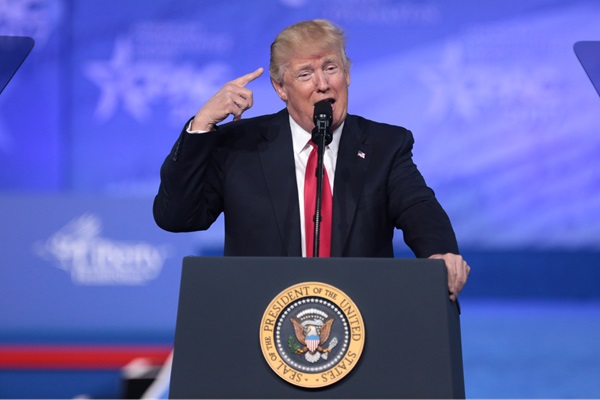.png)

Ajay Srivastava, founder of Global Trade Research Initiative, is an ex-Indian Trade Service officer with expertise in WTO and FTA negotiations.
March 26, 2025 at 5:41 AM IST
Talks between India and the US for a Free Trade Agreement have gained momentum in recent weeks amid US President Donald Trump’s threats to impose reciprocal tariffs on trading partners. But scratch the surface, and it quickly becomes clear that merely signing a Bilateral Trade Agreement – an FTA by another name - might not be the panacea New Delhi is hoping for to address Washington's tariff tantrums.
The bureaucratic complexities involved in implementing an FTA with the US could put red tape in emerging economies in a better light. And that's only the beginning. The follow-up process allows major US corporations to extract substantial concessions from a partner country before the ink even dries on the agreement.
First, consider the Fast Track Trade Authority mechanism, which historically allowed the US President to negotiate trade agreements and submit them to Congress for a straightforward up-or-down vote, without amendments or procedural delays. However, the FTTA lapsed in 2021 and hasn't been renewed.
Without this authority, trade agreements negotiated by the US President are exposed to Congressional scrutiny, potential amendments, delays, or even outright rejection. This creates significant uncertainty for negotiating partners like India, which has no guarantee that a final deal, even if agreed upon, will survive the US legislative process intact.
The FTTA facilitated the swift approval of significant FTAs such as NAFTA, CAFTA, and the WTO’s Uruguay Round.
The other major hurdle is the Post-FTA Certification mechanism, which could prove even more frustrating. Consider this: The certification process delayed the enforcement of the US-Panama FTA by more than five years after its ratification.
Under this mechanism, the US unilaterally determines whether a partner country has fulfilled its obligations under the agreement. This mechanism originated with the 1988 Canada-US FTA, which later embedded in NAFTA, and has since become a standard component of US trade agreements. In practice, the US often demands partner countries amend or adopt new laws, regulations, executive decrees, or administrative procedures to align with Washington’s interpretation of the agreement—regardless of whether such changes were explicitly negotiated or documented.
An FTA does not come into force until the US issues certification, a process historically used to pressure countries into making additional legal and policy changes beyond the original FTA text.
There’s already a widespread perception that the US frequently moves the goalposts, demanding more than was formally agreed.
Many countries view this certification process as an infringement on sovereignty, as it allows the US to dictate domestic legal changes post-agreement.
For example, in Peru, the US allegedly directly influenced the drafting of 35 domestic laws. Peru’s government granted its president special decree powers to enact US-requested reforms, bypassing Congress. This led to widespread protests, especially among indigenous communities, culminating in the 2009 Bagua massacre. Civil society and opposition parties accused the government of implementing US-driven policies unrelated to the original FTA. US diplomatic cables later revealed warnings to the Peruvian government against yielding to indigenous demands, highlighting direct US pressure.
Similarly, Guatemala was pressured into adopting drug data exclusivity provisions absent from the original CAFTA text. The Dominican Republic was forced to alter fuel transport laws to benefit US oil interests, while Costa Rica’s Supreme Court initially struck down a US-driven intellectual property law only to reinstate it under US certification demands. Such interventions have increased concerns about democratic accountability and national sovereignty.
Behind the certification mechanism lies the considerable influence from powerful US corporate lobbies and Congressional trade committees. Industries such as pharmaceuticals, agriculture, energy, and technology frequently dictate the specific changes required for certification. Chevron, for example, influenced fuel deregulation demands in the Dominican Republic, while the US pharmaceutical lobby has consistently pushed for stricter intellectual property protections across multiple FTAs.
Therefore, India must proceed with caution in its FTA negotiations with the US. The path forward demands diplomatic skill and vigilance against legal asymmetries embedded in America’s trade playbook.
Adding to the imbalance, the certification mechanism is non-reciprocal, meaning that while the US can block an agreement from taking effect until its conditions are met, partner countries have no similar powers.
With no Fast Track Authority currently in place and the precedent of post-agreement certification allowing the US to impose additional demands, the risk of asymmetric obligations is significant.
Key source materials:
The Rise and Fall of Fast Track Trade Authority – Todd Tucker and Lori Wallach:
TWN briefing: Q&A on US ‘certification’ of compliance with trade agreements




